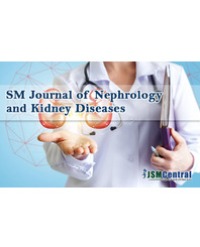
Monitoring Intracellular (Vc), Interstitial (Vi) and Intravascular (Vb) Volume Changes During Dialysis (HD) in a Chronic Unit (CU) Compared to an Acute Unit (AU) Setting
Introduction: End-staged renal disease (ESRD) patients may be dialyzed under both chronic and/or acute conditions. No information was found in the literature regarding the intracellular, interstitial and intravascular volume changes that take place under both chronic and acute dialysis.
Aim: To measure the volume changes of the intracellular (Vc), interstitial (Vi), and intravascular (Vb) compartments during hemodialysis (HD) in end-stage renal disease patients in an outpatient or chronic unit (CU) and in an inpatient or acute unit (AU) setting and create pattern profiles for each treatment center.
Materials and methods: In a descriptive study, electrical impedance spectroscopy (EIS) was used to obtain noninvasive real time relative measurements of Vc, Vi, and Vb changes continuously during dialysis with four electrodes place on the calf. A total of 70 ESRD patients was included in this study (23 chronic and 47 acute).
Results: The average pre-dialysis percentage volumes in the Vb, Vi, and Vc compartments of the chronic patients was 51%, 19%, and 29%, respectively. The similar percentage volumes for the acute patients were 26%, 29%, and 45%. The average post-dialysis volumes for the chronic patients were 49%, 15%, and 36%. The post-dialysis values for the acute patients were 27%, 25%, and 49%. Vc increased during hemodialysis in both patient populations. AU patients retained a larger percentage of total fluid in the Vi and Vc compartments.
Conclusion: The EIS technique was able to track fluid volume changes in the three principal fluid compartments of the calves of ESRD patients under both chronic and acute treatment. Results indicate that Vc in the monitored calves tended to increase during hemodialysis in both CU and AU patients as overall calf volumes were reduced.
Leslie D Montgomery¹*, Richard W Montgomery¹, Wayne A Gerth¹, Susie Q Lew², Manuel T Velasquez², Julian M Stewart³, Marvin S Medow³ and Michael M Klein³
